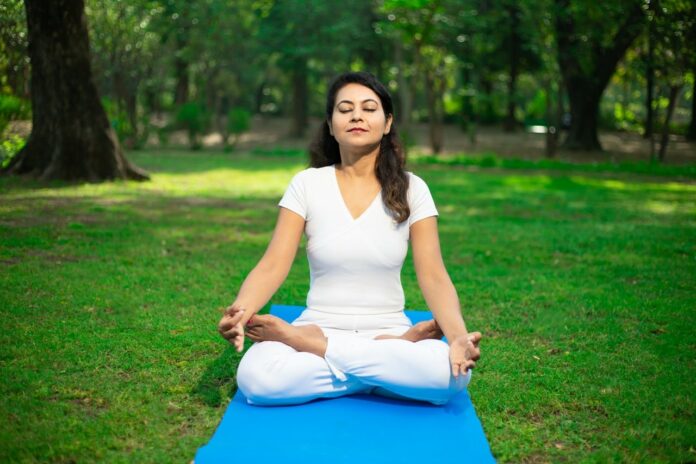Yoga can imply various things to totally different folks, however the definition of Yoga comes from its historical Sanskrit root phrase “yuj” which suggests “to yoke” or “to affix”. Yoga is a bodily, psychological and non secular observe that originated in historical India that goals to create a union between the thoughts, physique, and spirit, in addition to between the person self and common consciousness. This union permits the person to neutralize or fight ego-driven ideas, behaviors, and speech, making a path in the direction of a non secular awakening.
Yoga has been practiced for hundreds of years and through this time many various interpretations and kinds have been developed. Having stated that, most individuals are likely to agree that the final word aim of yoga is to realize freedom from ache and struggling. Though every college or custom of yoga has its personal emphasis and practices, most deal with bringing collectively physique, thoughts and breath as a method of altering power or shifting consciousness.
In at present’s yoga scene, many individuals affiliate it with the bodily observe or the asana’s, that are a sequence of postures typically sequenced collectively in kinds akin to Vinyasa Stream, Ashtanga, Iyengar, or Yin. The asana practices are primarily supposed to construct power and stamina, whereas additionally bettering flexibility, steadiness, and coordination, and to finally calm down the physique. Nevertheless, the bodily features of yoga solely inform a small a part of the general custom of yoga as an entire.
These eight roads or paths are often called the ‘Eight Limbs of Yoga’, which provides a information or roadmap to people who’re devoted to totally immersing themselves into making a union between the thoughts, physique, and spirit. Every of the Eight Limbs describes a lifestyle that’s centered round integrity, self-discipline, and respect for nature and reference to the non secular features of life. Here’s a transient description of these Eight Limbs:
- Yamas – 5 common, moral and ethical observances to stay by (nonviolence, truthfulness, non-stealing, continence and non-covetousness)
- Niyamas – 5 non secular and self-discipline observances (cleanliness, contentment, non secular austerities, research of scriptures and give up to God)
- Asana – bodily posture, initially supposed just for seated meditation, however extra not too long ago tailored to embody all bodily yoga practices
- Pranayama – respiration workout routines to regulate the circulate of prana (very important life power)
- Pratyahara – Withdrawal of the senses
- Dharana – Single pointed focus
- Dhyana – Meditation
- Samadhi – Liberation or blissful union with the Divine
Though fashionable faculties of yoga akin to Jivamukti, Bikram and Sivananda supply a distinct perspective or another interpretation, most yoga practices are rooted in the identical philosophical ideas and practices as Patanjali’s Eight Limbs. As well as, yoga may also be used as a therapeutic instrument for a lot of bodily and psychological situations, and mind-body analysis is now displaying its effectiveness as a remedy for a wide range of points, together with anxiousness, power ache, melancholy, diabetes and heart problems, to call however a couple of.1-4
Regardless of who you’re, the place you’re, or what’s going on in your life, yoga can play an integral position in your total well being and wellbeing. It might have began to deal with bodily wants, emotional wants, or for a deeper appreciation of your spirituality, but it surely doesn’t all the time end in these doable advantages. Hopefully over time it could enhance all of those features of wellness in your life, but when for some motive it doesn’t appear to be working, it might be useful to think about a distinct model of yoga.
Bear in mind, your yoga observe is exclusive and private to you. When getting into your yoga (asana) observe, I extremely suggest you comply with these steps to make sure you’re permitting every pose to serve your physique, as an alternative of letting exterior expectations dictate some unattainable norm or “aim”:
- Ask your self: What’s obstructing you on this pose? For instance: The place is there pressure? Is my physique compressed on this pose? Can I breathe deeper into this pose for extra of a deeper stretch?
- All the time be curious and discern between what you can management and what’s past your management.
- Create your intention round self-discovery in your observe.
- The overarching aim to your yoga observe needs to be rooted in celebrating your distinctive anatomy with curiosity and self-compassion…AND NOTHING ELSE!
Greater than something, be compassionate. It’s vital to not beat your self up when evaluating your observe to different folks as a result of, we must always all know that “comparability is the thief of pleasure”. So, don’t take the enjoyment and marvel out of your observe by specializing in what another person might be able to do on their yoga mat. Everybody has a distinct skeletal make-up, totally different muscle tissue and connective tissue, and histories which have introduced them to this actual second in time. Your physique is the one one prefer it, so embrace it and meet your self the place you’re, each single day, once you get on that mat.

